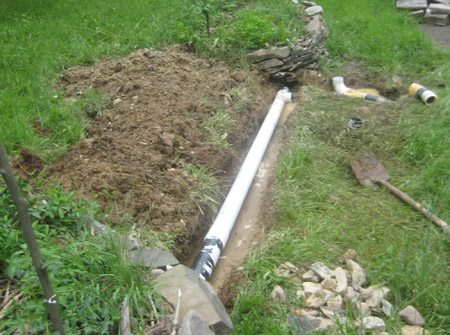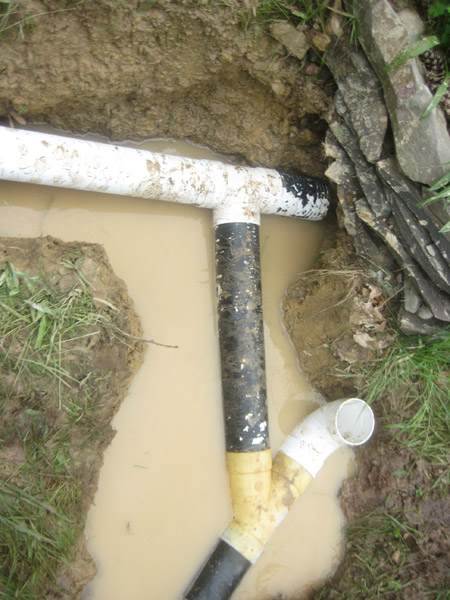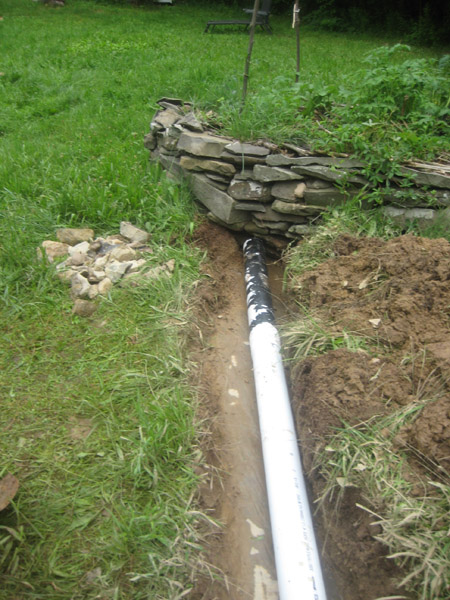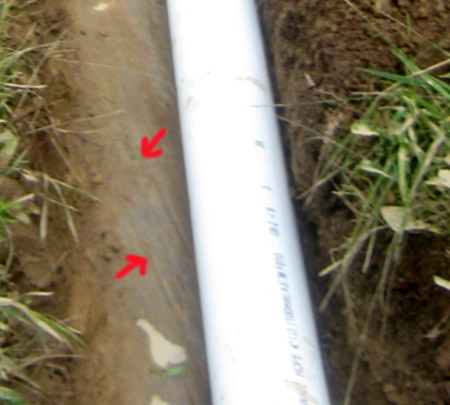|
|
|
constipated soil on glacial grooves
Sunday, June 26 2011
Today I began work on creating another place in the yard to grow vegetables (in this case, a perennial asparagus patch). With Gretchen's blessing (which I decided to obtain following her initial disaproval of the siting of my second tomato patch), the new patch would lie between the two tomato patches I created last year. Those patches are terraces partially-surrounded by stone walls. To make a third patch, I decided to connect both of those patches with a new wall to unify all three patches into a single large terrace above a twenty-five-foot long retaining wall, 15 feet of which would be new wall I would begin building today.
When building the tomato patches last year, I'd built the retaining walls with care, excavating down to the bedrock so they'd sit upon solid foundations. It seemed prudent to use similar care with my new wall, so today I started the wall building by digging a trench down to bedrock.
Once I cut through the last soil separating the southmost (highest) tomato patch's retaining wall from my new trench, a deluge of ground water from recent rains was unleashed, washing clean the bedrock I'd exposed. This revealed beautiful north-south glacial striations that had lain hidden beneath the lawn. Seeing all that water, I decided that it might be a good idea to put drainage pipe beneath my new wall to carry away some of the runoff and perhaps make the ground immediately downhill a little less soggy. As I was excavating a place for this pipe to drain away to, I conveniently found the end of a buried pipe, the uphill outpost of one of my driveway drainage projects. So I decided to tie the new wall-draining pipe into this system.
Recently I've had a lot of direct contact with Portland cement, which in the past has been caustic enough to cause little burns in the sensitive skin between my fingers. But after recent exposures, my hands seemed to be unaffect. Perhaps they'd acclimated or otherwise developed resistance to harsh inorganic alkali environments. Today, though, my hands seemed to suffer just from simple exposure to the soil I removed from the trench, which is a constipated clay (poor in organic matter and resistant to drainage). The clay seemed to devour the oils in my hands, leaving them feeling extremely dry and intensify the unpleasantness of injuries (including blisters and that burn I mentioned in yesterday's entry).

The new ditch, with drainage pipe, looking towards the second (northmost) tomato patch.

Where the new drainage pipe joins up with the unearthed headwaters of the driveway drainage system near the northmost tomato patch (it comes in at an angle at the bottom of this photo). I added a branch with an upturned 90 degree fitting partly to help me find this useful bit of buried pipe on some future day.

Looking back at the southmost tomato patch down the new ditch and new pipe.

The red arrows indicate the glacial striations in the bluestone bedrock.
For linking purposes this article's URL is:
http://asecular.com/blog.php?110626 feedback
previous | next |



